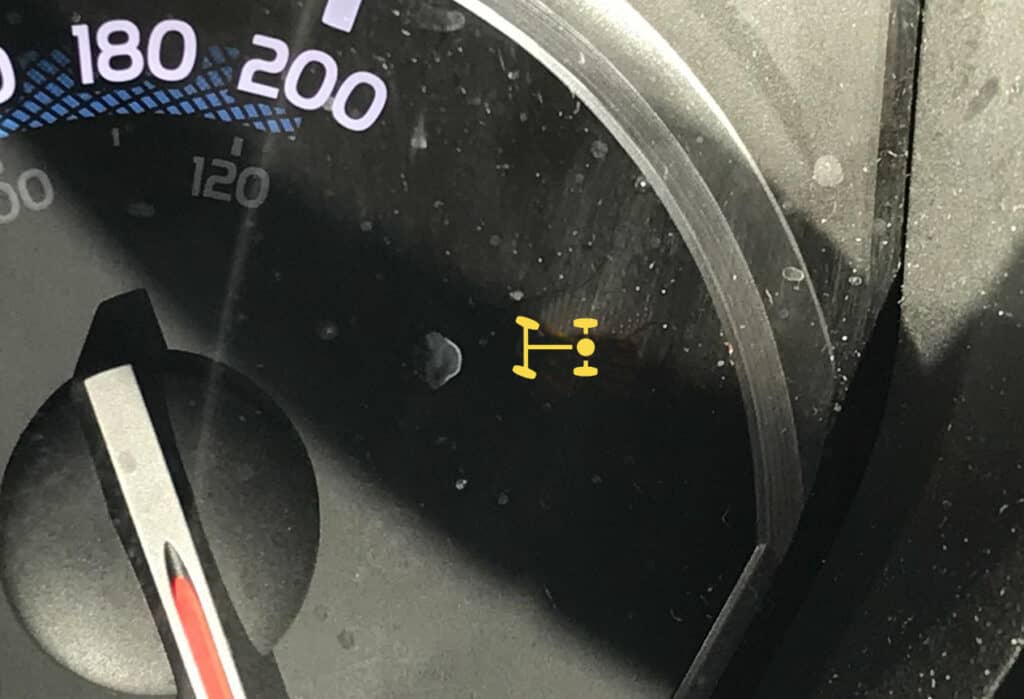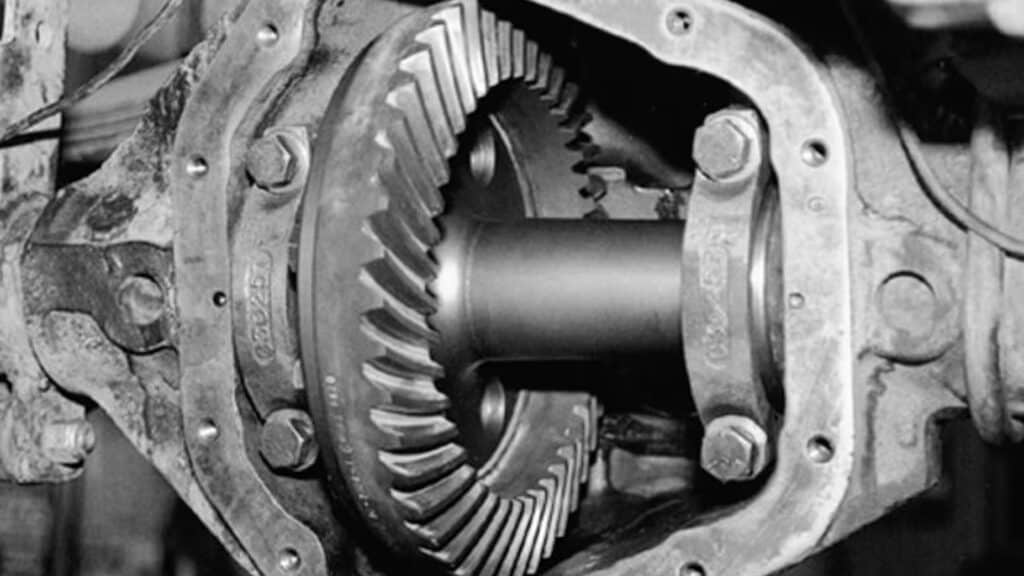Embarking on a Four-Wheel Journey — The Importance of Understanding Your Differential Lock Warning Light
Imagine getting stuck in mud while off-roading, or encountering a slippery slope on a rainy day. In such situations, your vehicle’s differential lock warning light isn’t just another symbol on your dashboard; it’s a beacon guiding you toward safety and better traction. Whether you’re a weekend warrior exploring rough terrains or a daily commuter, knowing how this system works could mean the difference between an unfortunate event and a smooth ride.
The ‘Diff’ Story: Unveiling the Mystery of the Differential Lock System
The concept of differential lock, commonly referred to as ‘diff lock,’ might seem like a bit of a mechanical enigma to the uninitiated. But for those who drive through rugged terrain or experience extreme weather conditions, this little-understood function can be a godsend. Unlike standard 4X4 and AWD systems, which mainly focus on power distribution between the wheels, the differential lock has a different, albeit equally crucial, job: synchronizing your wheels to turn at the same rate.
Here’s how it works: when you engage the diff lock, it essentially ‘locks’ the axles, forcing both wheels to move in unison. The typical symbol for this function is a pair of interlocked gears or wheels displayed on your vehicle’s dashboard. This is immensely helpful in situations where one wheel might be on a slippery or uneven surface while the other is not. When your wheels are moving at different speeds, the wheel on the slippery surface may spin out of control, reducing traction and making it difficult to move forward. However, by enabling the differential lock, you’re ensuring that both wheels move at the same speed, increasing traction and making it easier to navigate tough terrains.

Driving with ‘Diff-erence’: The Dos and Don’ts When Your Diff Lock Is On
While the benefits of a differential lock system—especially for off-road enthusiasts—are immense, it’s not a feature designed to be left on indefinitely. There are essential guidelines to observe for its optimal use. First off, the speed factor. When you engage the diff lock, it’s recommended not to exceed speeds of 40 km/h. Why? Because doing so can place an enormous strain on your vehicle’s mechanical systems, potentially leading to wear and tear much quicker than you’d prefer.
At lower speeds, you can continue driving with the diff lock engaged, especially if you’re traversing difficult terrains like mud, sand, or snow. But remember, this isn’t a “set it and forget it” feature. The moment you return to regular road conditions—be it tarmac, gravel, or any other less challenging surface—it’s vital to disengage the differential lock. Continuing to use it on these surfaces can lead to poor handling and even mechanical issues.
There are two main takeaways here: use your diff lock judiciously, and always remember to turn it off when you don’t need it. This will not only keep your vehicle running smoothly but also extend the lifespan of its mechanical components.
Lights and Indicators: What the Center Differential Lock Light and Flashing Signals Mean
When you see these signals, don’t ignore them:
• Steady Light On: A constant light generally means that the differential lock is engaged. This is the system’s way of telling you that both wheels are now synchronized for better traction.
• Flashing Light: A flashing differential lock light usually spells trouble. This could mean a malfunction within the locking system, perhaps due to a sensor issue or mechanical failure.
• Yellow vs. Red: The color of the light also carries significance. A yellow light might indicate a system that is ready but not engaged, while a red light could signal an urgent issue that requires immediate attention.
• Don’t Ignore the Signs: When any of these lights activate, it’s a call to action. Ignoring them could lead to poor vehicle performance or even irreversible damage.
Getting Unstuck: How to Unlock Your Differential
Unlocking your differential is an essential step when you transition from rough terrain back to standard driving conditions. The last thing you want is to drive on a smooth road with your differential lock still engaged—this could severely strain your vehicle’s systems. Usually, the same switch or button that was used to activate the lock is used to disengage it. Some modern vehicles even make this easier with an automated system that disengages the lock when certain conditions are met, like reaching a particular speed.
When you successfully disengage the differential lock, the indicator light should extinguish. If it doesn’t, that’s a sign of trouble, possibly requiring a mechanical check-up to diagnose the problem. Sometimes, it might just be a glitch, but it’s better to be safe than sorry. Remember, the differential lock should only be engaged under certain conditions, like when driving off-road or on slippery surfaces. As soon as those conditions no longer apply, make sure you disengage the lock to prevent any mechanical complications.
Fixing the Unfixable? Potential Repairs and Cost Analysis
If your differential lock light keeps flashing or fails to turn off, you might be looking at some repair work:
• Minor Repairs: Small fixes such as recalibrating the system or replacing a sensor could cost you around $100 to $300. These are typically quicker to diagnose and repair.
• Major Repairs: For more serious issues, like a damaged gear in the differential, you could be looking at repair costs that exceed $1,000. These problems often require parts to be ordered and more intensive labor.
• Fluctuating Costs: Prices can vary depending on the make and model of your vehicle, as well as your location. Urban areas might charge higher labor costs compared to rural regions.
• Do-it-Yourself vs. Professional Help: While some minor adjustments might be manageable for a DIY enthusiast with the right tools, most repairs are best left to the professionals. Doing it wrong could amplify the problem and the costs.
• Immediate Attention Required: If your differential lock light is flashing or refuses to disengage, don’t wait to get it checked. Ignoring the issue can lead to a more complicated and expensive repair process.
By keeping an eye on these indicators and understanding the potential repairs, you can take proactive measures to ensure that your vehicle remains in optimal condition.

Advanced Diff Lock Maneuvers: Axles, 2WD, and Moving Locks
Differential locks and axles are often mentioned in the same breath, but they’re not the same thing. While axles are a physical component connecting two wheels, a differential lock is more about functionality—it’s a system that synchronizes the wheels to move at the same speed. This comes in handy when one wheel is on a slippery surface and the other is not; locking them ensures both wheels receive equal power from the engine.
In terms of engaging a differential lock while in motion, that’s a bit of a tightrope walk. Some modern vehicles do offer this feature, but it’s generally not recommended unless you have significant experience in off-road driving. Engaging the lock at high speeds or on hard surfaces can cause mechanical damage.
Many people often conflate 4X4 and differential lock, but they serve different purposes. While a 4X4 system also provides increased traction, it does so by powering all four wheels. In contrast, a differential lock simply ensures that two wheels on the same axle move at the same speed, thus improving grip. In 2WD vehicles, a differential lock is less commonly found. It’s usually an additional feature in these vehicles, not a standard one.
Understanding these advanced maneuvers and concepts can substantially improve your mastery over your vehicle’s capabilities. This is especially important when navigating tricky terrains, as the right decision can mean the difference between an exhilarating off-road adventure and a day spent stuck in the mud.
Navigating the Path Ahead — Why Differential Lock Knowledge is Your Off-Road Companion
When it comes to conquering off-road terrains or navigating challenging conditions, understanding your vehicle’s differential lock system isn’t a luxury; it’s a necessity. And if you ever find yourself in a bind with your differential lock system, having it looked at sooner rather than later is advisable. For trustworthy and convenient service, consider Uchanics, a mobile mechanic service in Canada that brings professional help right to your doorstep.
